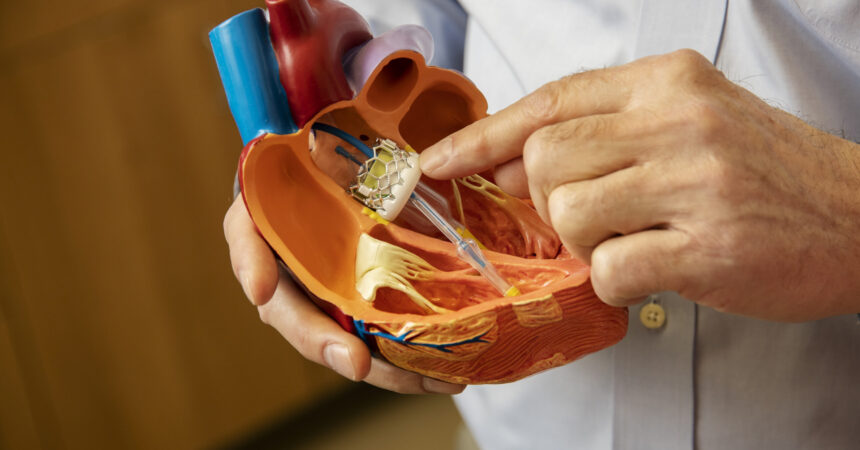Aortic stenosis is a serious valve disease problem that occurs in about 2 percent of people over the age of 65. It occurs when your aortic valve is obstructed, causing the heart to work harder to pump blood throughout your body. Over time, the obstruction limits how much blood the heart can pump — in turn, weakening the heart.
MultiCare’s Pulse Heart Institute has been treating patients with aortic stenosis for many years with traditional open-heart surgery and, since 2014, the less invasive transcatheter aortic valve replacement (TAVR) procedure. TAVR, a minimally invasive procedure to replace a diseased aortic valve, alleviates the symptoms of aortic stenosis.
Symptoms of aortic stenosis
As aortic stenosis can range from mild to severe, your symptoms may vary depending on your severity. Some signs and symptoms of aortic stenosis may include:
- Shortness of breath, notably while doing activities
- Feeling dizzy or light-headed
- Fatigue
- Heart murmur or abnormal heart sounds
- Heart palpitations
- Chest pain or tightness
What causes aortic stenosis?
Aortic stenosis can be caused by a number of things. Some of the primary causes include:
Congenital heart defect
The aortic valve consists of three triangular-shaped flaps of tissue called cusps. In some instances, children can be born with an aortic valve that has only two cusps (bicuspid). In rarer cases, children can be born with one cusp (unicuspid).
This defect typically won’t cause any issues until later on in life. Once in adulthood, the valve may begin to narrow or leak and will have to be repaired or replaced.
Calcium buildup on the aortic valves
Over time, calcium deposits can accumulate on the heart valves. In many instances, calcium deposits may never cause any issues. However, for those with congenitally abnormal aortic valve, calcium deposits can result in stiffening of the cusps and valve. Because this is caused from a buildup over time, most aortic valve stenosis cases linked to calcium buildup are diagnosed later in life.
Rheumatic fever
Rheumatic fever can occur from complications with strep throat. In certain cases, this can result in scar tissue forming on the aortic valve. This scar tissue can narrow the aortic valve and lead to aortic valve stenosis.
What is the TAVR procedure?
TAVR is a minimally invasive procedure designed to replace a diseased aortic valve. Because the procedure is less invasive, recovery time is also less than that of alternative procedures.
TAVR works by inserting a new valve inside the diseased aortic valve, without requiring the chest to be opened. A balloon-expandable aortic heart valve is inserted into the body using a catheter. The catheter is often inserted through your transfemoral artery by incision in the leg. Once the catheter is inserted into your artery, your doctor will guide the catheter up to your heart and replace the diseased valve.
Depending on the situation, other possible locations for inserting the catheter include:
- Through a large artery in the chest via a small incision in the chest
- Through the tip of the left ventricle via a small incision between the ribs
As with any heart procedure, TAVR does come with some risks. Complications include:
- Bleeding
- Heart attack
- Kidney injury
- Stroke
- Blood clots
- Heart rhythm abnormalities
- Infections that affect the heart
- Death
TAVR comes with a high success rate. Most people are up and walking within hours after their TAVR, and many patients return home with their caregivers one day after the procedure. Consult with your provider to learn more about the procedure and risks involved.
Who is eligible for TAVR?
Patients who have severe aortic stenosis are eligible for TAVR if open-heart surgery is not an option due to:
- Age
- Serious comorbid, or related conditions
- Frailty
- Any other condition that would make open-heart surgery too risky
How long is TAVR expected to last?
The long-term durability of transcatheter heart valves is not known at this time; how long your transcatheter heart valve will last depends on many factors and will vary per person. Regular follow-ups with your cardiologist will help your doctor know how your valve is working.
Learn more
Living with aortic stenosis comes with lifestyle changes. The Pulse Heart Institute is committed to offering the latest medical procedures for patients living with this disease and helping people with aortic stenosis regain their independence.




